
With a shield held in front of you, the most valuable and most exposed area to be protected is your head. Helmets were in used during the entire Roman Era, as well as routinely used by their predecessors and opponents.
Researchers have identified five major types of helmets, with large number of subtypes for each.
Common thread of all the helmets is the basic design was obtained from some other people group, adopted, then refined. That fits with a broader pattern I have observed that the Romans were aggressive in adopting good ideas used by enemies which they found helpful.
Galea – plural galeae
Wikipedia provides an introductory overview of galea.
Roman Soldier Operations Manual: Daily Life * Fighting Tactics * Weapons * Equipment * Kit by Simon Forty provides more detail, but alas, is not linkable and all the images are copyrighted.
The Complete Roman Army by Adrian Goldsworthy has several pages providing great discussion of helmets.
As is typical for the book, Legionary: The Roman Soldier’s (Unofficial) Manual by Philip Matyszak provides great ’advice’ to a Legionnaire shopping for a helmet.
Montefortino helmet
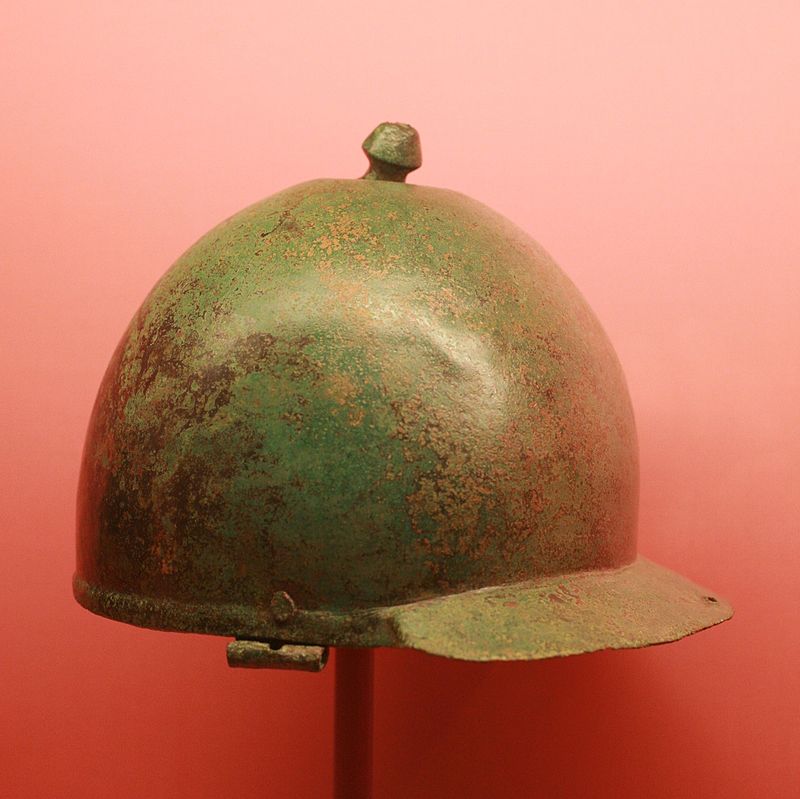
Used from 4th century BC through 1st century AD
Earliest helmets were simple, with a round shape and small neck guard. These would have been easy to produce and cheaper than the later designs. They were made out of bronze.
The basic design was developed from Celtic helmets.
They apparently had cheek guards as well, since they typically have holes in the sides of the helmet. Reportedly, most of the Montefortino helmets discovered do not have a cheek guard, leading to speculation the cheek guards were made of leather instead of metal.
Coolus helmet
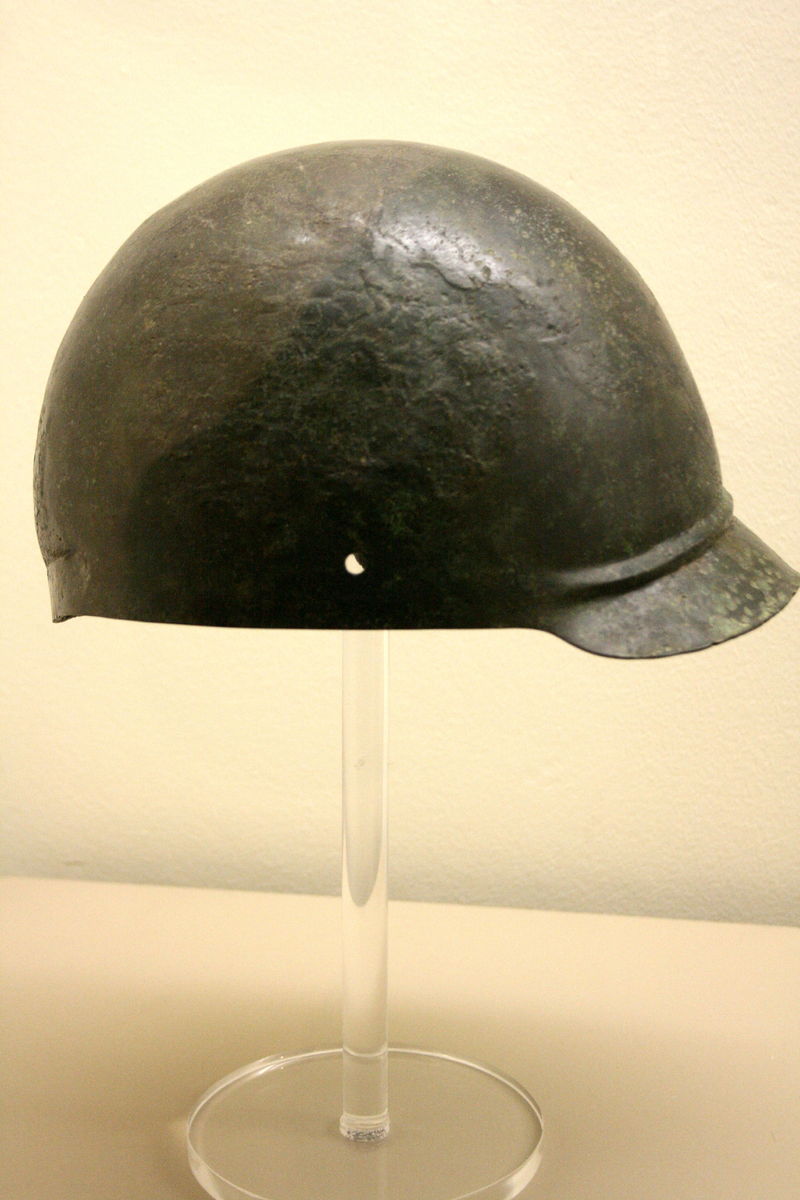
Used from 3rd century BC through 1st century AD.
Helmets were made out of brass or bronze.
These were hemispherical in shape instead of round.
They had a small neck guard.
Later versions had ear protection and wider neck guard.
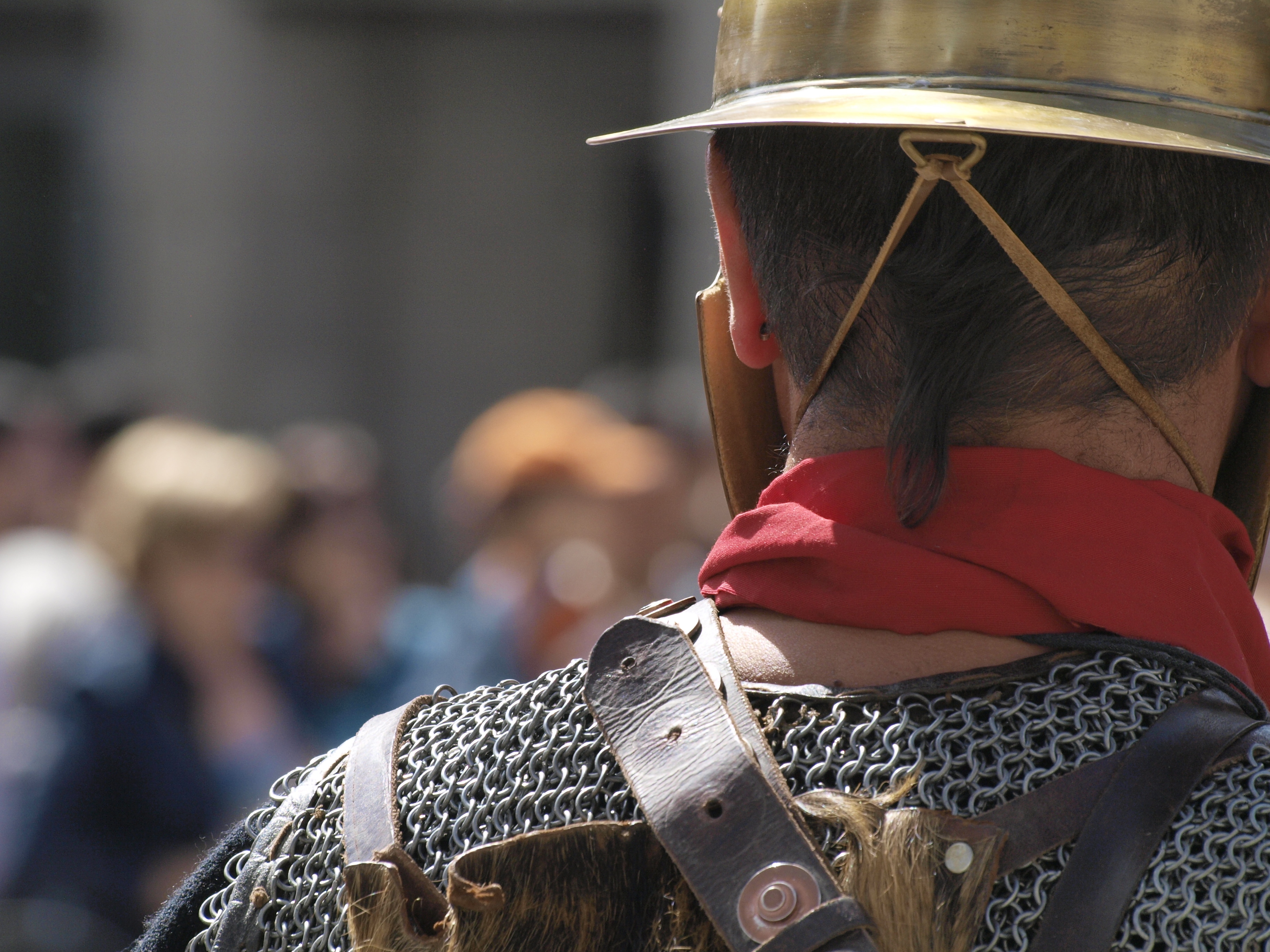
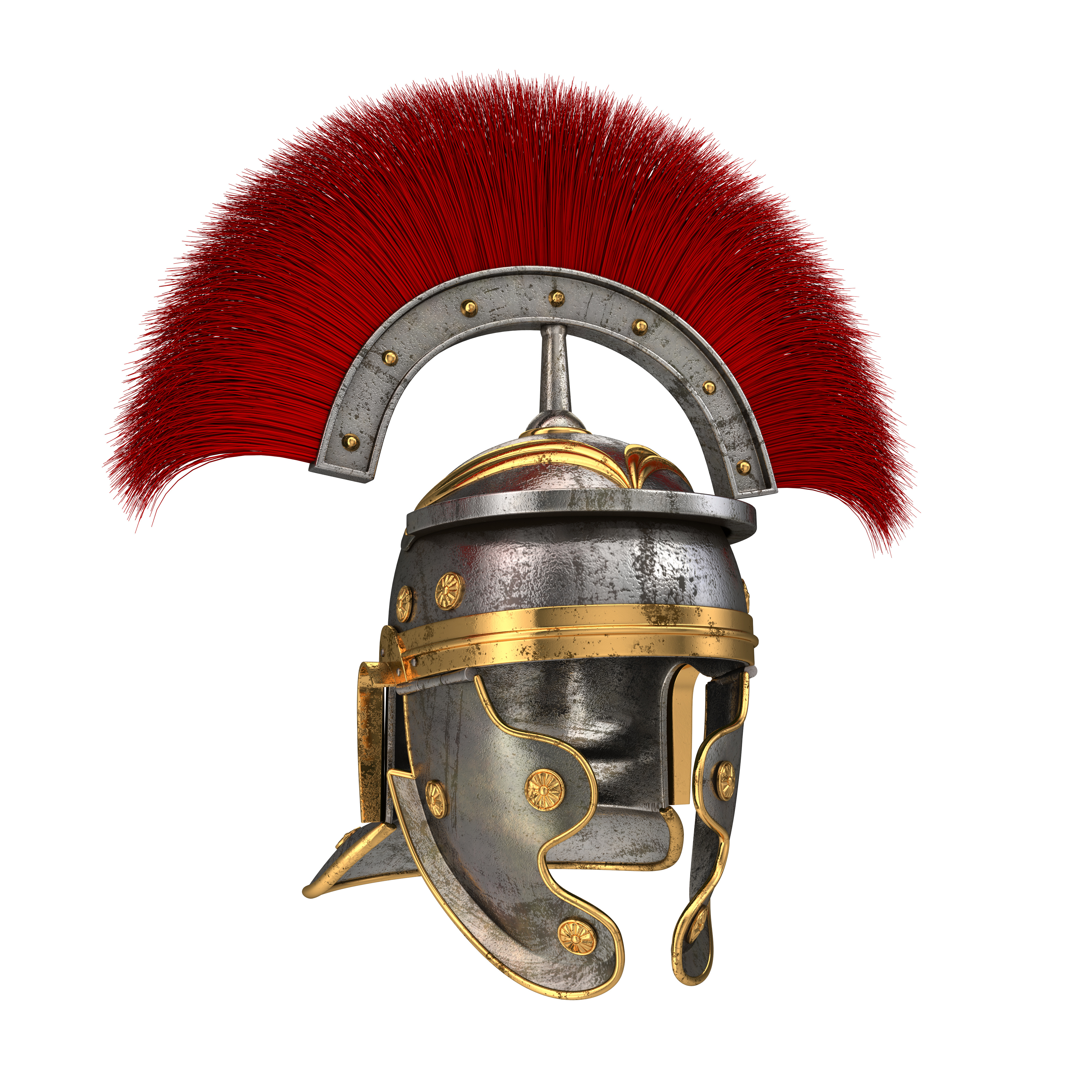
Used from later 1st century BC through early 2nd century AD
The image that comes to mind today when thinking of a Legionnaire involves one of the Imperial helmets. They are the classical visual for a Roman soldier.
The two major groups, Gallic and Italic, are based on where the helmets were made. The Imperial Gallic were a new design originating in Gaul.
They were made of iron with brass decorations.
These helmets had a longer and wider neck protection, which angled down. Length of the neck protector increased over time. The wider ones would also protect the shoulders from a glancing blow.
In contrast to cavalry helmets, there were cutouts for the ears. The infantry needed to hear shouted commands, thus an ear cutout to improve hearing. Illustrations I’ve seen of cavalry helmets do not show any ear cutout. I realized the reason: The cavalry, with many horses between the rider and the commanders and the amount of noise from horses and rattling gear, would make it near impossible to hear any commands. Thus it would be better to have the slightly better protection than try to hear commands which were already inaudible during combat.
The ear cutouts eventually evolved to protruding a bit from the helmet, thus becoming ear protection.
There was a band across the forehead to provide extra protection.
The Imperial Gallic helmets were built in Gaul (i.e. the areas we now call France, Belgium, and parts of Netherlands, Switzerland and west bank of Rhine in Germany). They were of higher quality construction than the Imperial Italic helmets.
The Imperial Gallic helmets also tended to have raised, fancy ‘eyebrows’. Couldn’t find a good illustration of the fancier eyebrows.
Imperial Italic helmet
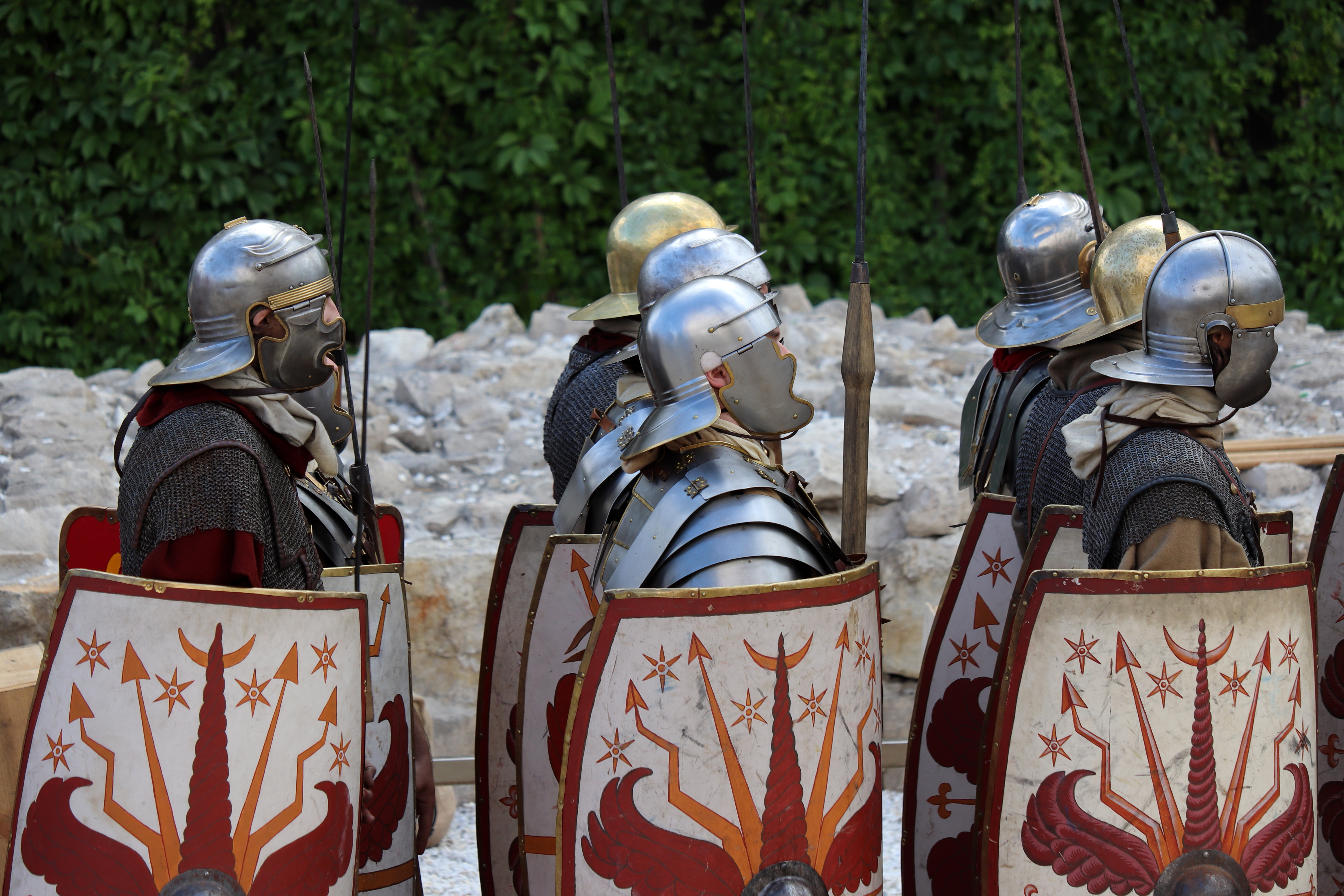
Used from late 1st century BC through 3rd century AD
These were apparently the same design as the Imperial Gallic, but of lower quality manufacture and less ornamentation. Several comments suggest these were made in Italy, thus the italic description in the name.
The Romans faced off with the Dacians, losing in 87 AD, fighting again in 101-102 AD, then winning decisively in 105-106 AD.
Fascinating tidbit: The mines in Dacia were heavily laden with gold. Estimates are the Dacian mines added about 700 million Denarii a year to the Roman budget. Each year.
As a financial tangent to the Dacian war tangent to the galea discussion, I recall making a wild guess that the annual payroll cost of 4,800 man strong legion was about 410,000 Denarii in about 100 AD. See Payroll cost for a Roman Legion – Part 2 of 2. My guess is about 490,000 Denarii a year for payroll of a full strength 6,000 man legion.
Let’s make a completely wild guess the other costs of a legion and the logistical support doubles that cost. That wild assumption brings the cost of legion of 6,000 soldiers to about 980,000 denarii a year. Let’s round that to an even million.

So, my continued string of wild guesses shows:
- 700 million denarii – annual net output from Dacian mines
- 1 million denarii – wild guess on cost to operate a legion of 6,000 soldiers
- 700 – equivalent number of legions funded annually if the output from Dacian mines was used only for funding the army
- 28 – number of legions in the Roman army at the time of the Judean revolt. That was when the Romans got tired of those pesky Jews in Israel. Six legions and probably an equal number of auxiliaries destroyed most of Israel and leveled Jerusalem.
- 25 – number of years the annual output of Dacian mines would fund all the legions in 70 AD. Take with a grain of salt because that is the result of a really long string of guesses.
So, looks like Trajan’s Dacian wars were quite profitable financially, in addition to finally taking care of those pesky Dacians.
(Another tangent – with 28 legions or so at its disposal, notice a pattern of what happens to a people group who pushes too far and gets to be too much of a pest to the Romans?)
Enough of that tangent to the tangent.
Back to the Dacians, who used a heavy two handed sword, called a falx, to deliver overhand blows to the head.
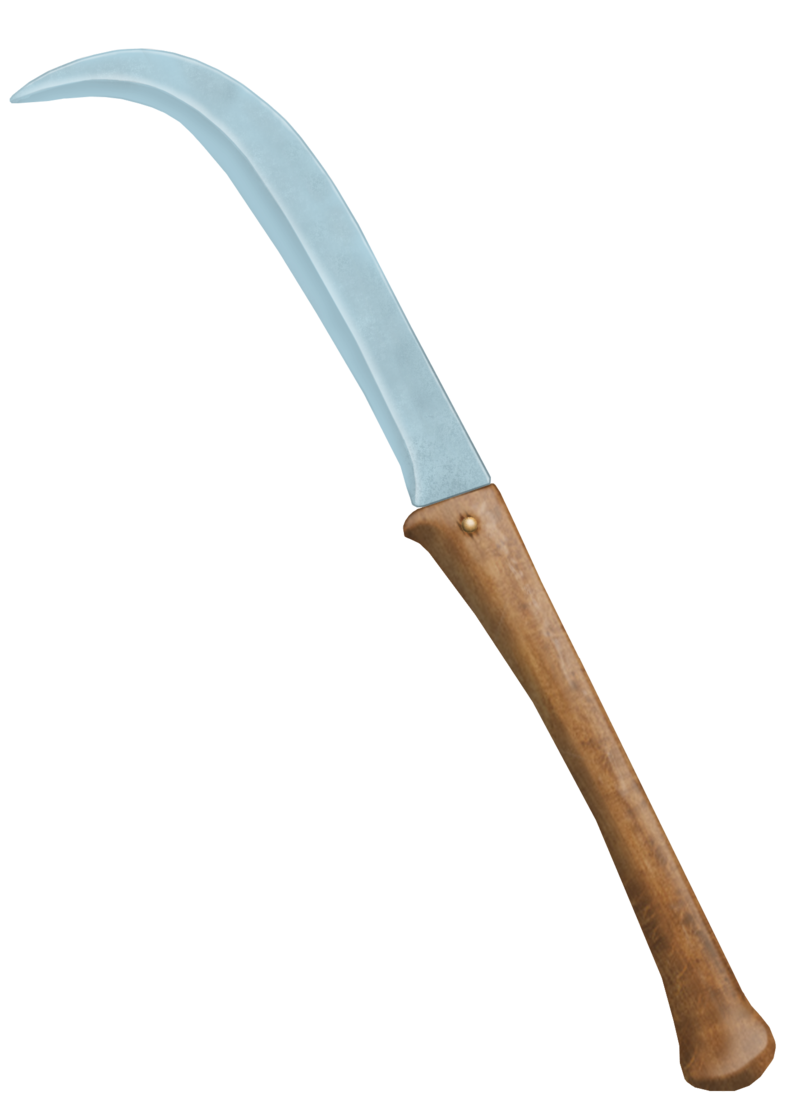
As a result, two metal reinforcing bands were attached to the Legionnaire’s helmets. This was initially done as a field expedient. One band went left to right, the other front to back. Those bands would provide extra protection from an overhead slash. Later, the bands were built in during manufacture.

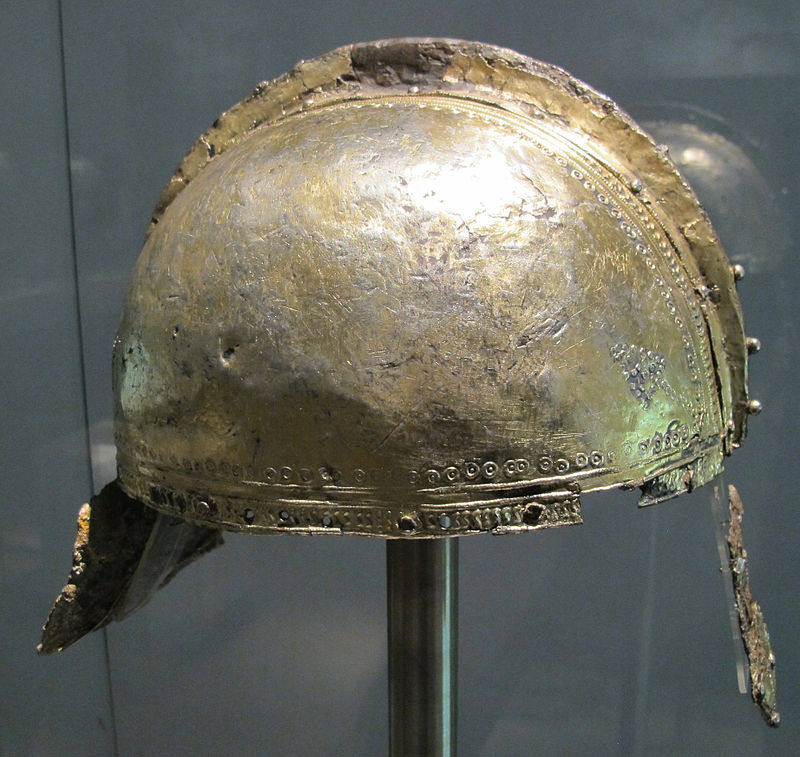
Started in use around 4th century AD
It is also called a Incisa or Spangenhelm.
This helmet was made of iron and formed in either two or four sections. The separate pieces were joined together with a ridge. Parts would be joined with rivets and welding.
Earlier helmets were made in one piece.
Padding
Roman Soldier Operations Manual says little archaeological evidence remains of what padding was used under a helmet. That makes sense since the leather or cloth would have long since decomposed.
That padding was necessary is quite obvious. A force of blow to a helmet would transmit directly and completely to the skull without padding. Leather and cloth were likely used. The book says a resin (think glue) has been found on the inside of many helmets, thus implying a leather padding.
Crests
Most helmets were designed with a knob on the very top which was used to attach a crest. The crests were made of feathers or horse hair and were usually colored with a dye.
Several sources I’ve read says there is debate amongst researchers how often line soldiers and command staff would wear crests attached to their helmets. The range of positions is from often early on in the Roman Era to rarely later on.
Other debate is whether the colorful crests were worn in combat or only for parades and inspections.
My tiny little brain is thinking that since the goal of a helmet in general, the ear guards in particular, and the long neck guard is to deflect blows, having a large, semi-rigid thingie attached to the top of your helmet that sticks up several inches and forward and back from the helmet several inches would be a great way to catch a swung sword.
For a good visual, look back to the Legionnaire shown at the top of this post.
The result would either be to knock the helmet off or transfer the force of an otherwise missed blow into massive force applied to the neck. If I had a choice (keeping in mind legionnaires had zero choice in such matters), I would very much want to not wear a crest in battle.
Posts on Legionnaire equipment and weaponry:
- Introduction
- Balteus or cingulum– belt, with comment on pugio, a daggar
- Lorica Segmentata, Lorica Hamata, Lorica Squamata – body armor, i.e. breastplate
- Caligae – sandals
- Scutum – shield
- Gladius – sword
- Galea – helmet
- Pilum – javelin